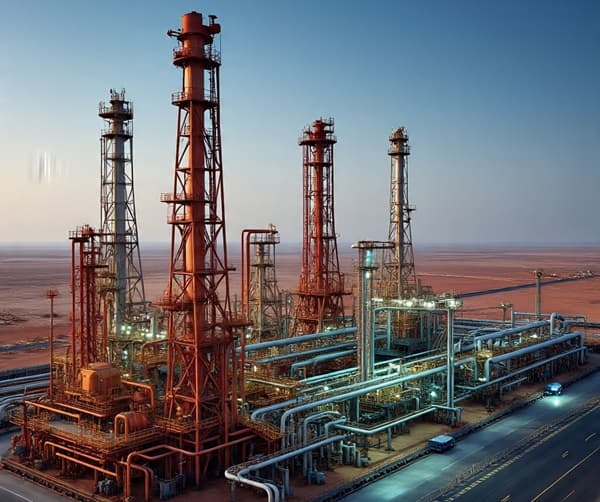The petroleum industry in India plays a crucial role in transport, manufacturing, household energy needs, and a fast-growing economy. India imports a vast amount of crude oil from Gulf countries and Russia. Most people think that India does not have any crude oil extraction wells; however, there are many. From onshore to offshore mining zones, India extracts a small amount compared to 230 Million Metric Tonnes of imports. Many states contribute to producing the national share, which helps in reducing imports and reducing dependence upon other countries. Here, we are making a list of the top onshore and offshore petroleum states along with key information in FY 2025.
List of the Top 5 Largest Petroleum-Producing States in India
The list is based on several parameters where the information is taken from Petroleum Planning and Analysis Cell (PPAC), DGH (Directorate General of Hydrocarbons), MoPNG (Ministry of Petroleum & Natural Gas, and MOSPI Energy Statistics India for the year 2025. Let’s get started and look at the top petroleum-producing states in 2025.

1. Rajasthan
Rajasthan leads in the production of petroleum with 23-25% contribution in national output. The overall FY25 output was 3.1 to 3.3 million metric tonnes. The credit goes to the prolife fields in the Barmer district. The extraction is done by Cairn India (Vedanta Ltd.) in the Mangala, Bhagyam, and Aishwariya fields. The private onshore production in the state was about 264 thousand tonnes per month. If this pace continues, Rajasthan will comfortably exceed 3 MMT for the fiscal year. Government and industry data consistently place the state at nearly a quarter of India’s total crude output, making it a national leader in both scale and efficiency.
2. Gujarat
A state that has impressive production quantity and refinery as well is Gujarat, and it will remain the dual powerhouse. There is the largest refining ecosystem in Gujarat, and the average production is 4.8 to 5 MMT for FY 202. The total contribution is 17-18%. You may find that Gujarat has more production than Rajasthan, so why is it in second place? Well, the reason is the offshore production of Gujarat, which adds to the total petroleum output. The key regions that account for the highest production are Ankleshwar, Cambay, Kalol, and Sanand, along with offshore blocks in the Saurashtra region.
3. Assam
Assam is progressing toward becoming the largest oil-producing state with its rich oil industry history. The Upper Assam basin hosts legendary fields such as Digboi (Asia’s oldest producing oilfield), Naharkatiya, and Moran. The approximate FY 25 output in Assam is about 4.1 MMT, and the quantity has been maintained for the past several years. Assam illustrates the longevity of well-managed legacy fields. It also anchors refinery operations in Digboi, Bongaigaon, and Guwahati, ensuring the Northeast remains vital to national supply. Apart from crude oil and petroleum production, Assam is a key player in the production of natural gas.
4. Andhra Pradesh
Andhra Pradesh has onshore and offshore blocks, which make it a rising state in petroleum production. The annual FY 25 output was between 0.25 MMT and 0.3 MMT. There are many exploration and new offshore discoveries that are currently under review for more extraction wells. It is expected that Andhra will be the new leader of Petroleum production due to the expectation from new wells. There have been many recent infrastructure and deep water exploration investments, leading to strategically positioning Andhra Pradesh as one of the top petroleum states.
5. Tamil Nadu
Even though the petroleum output of Tamil Nadu is similar to that of Andhra Pradesh at 0.3 MMT, Tamil Nadu has a steady share in national output, and it is also growing. The output is modest compared to the other states, but it is still valuable and ensures a consistent regional supply for domestic uses. Tamil Nadu demonstrates the importance of smaller but stable fields in maintaining a diversified national energy base. As the imports of crude oil are around 230 million tonnes, the local production helps small industries and ensures steady growth.
Bottom Line
India is still working on finding a new oil rig that can help in reducing imports and lowering oil prices in the country. The dependency on Gulf countries is high, and India is investing heavily to find new options and reduce the consumption through ethanol-blended petrol.